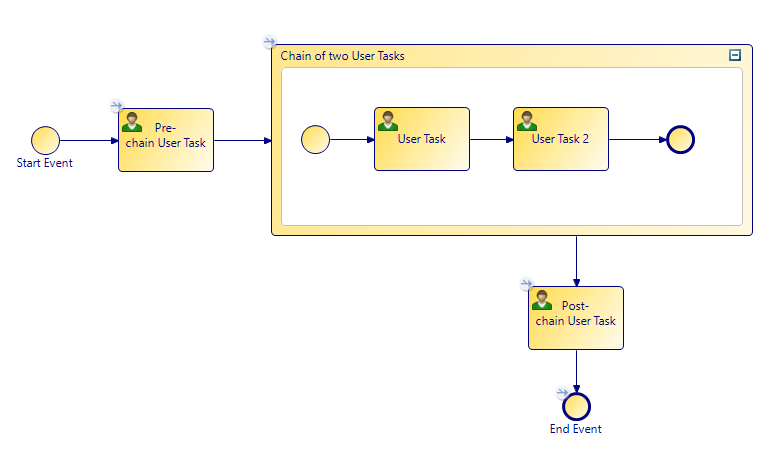Chained Execution
This resource pattern specifies the intention that the workflow engine should automatically start the next work item in a case once the previous one has been completed.
For more information, see the workflow patterns website:
http://workflowpatterns.com/patterns/resource/autostart/wrp39.php
This has the effect of a resource being allocated sequential work items within a process instance, and when a work item is completed, the next task is immediately initiated. This keeps the resource constantly processing a given process instance.
To provide chained execution, configure an embedded sub-process as follows:
The following example shows a very simple chain of two user tasks in an embedded sub-process. Note that you can include other types of task, such as script tasks, in between the chained user tasks. However, your system administrator must consider the time likely to be taken up by these other tasks when setting the properties in the "Chaining" section of the WPProperties.properties file.
In the Properties view for the embedded sub-process, select Chained Execution.
